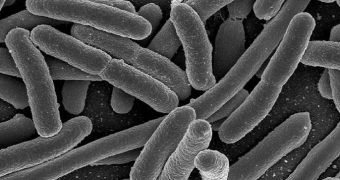Microbiologists have always been fascinated about bacteria's ability to resist everything we throw at them. The microorganisms are able to adapt to all manner of threats, and they can also learn to produce defense structures that render them invisible to the immune system. Some species produce a type of molecules known as lipopolysaccharides, which can both hide the bacteria and allow for them to infect more cells at the same time. Understanding how this layer is produced in the first place could help with the development of new drugs for a wide range of medical applications, ScienceDaily reports.
Using imaging and research techniques from chemistry and biology, researchers at the Ohio State University (OSU) looked more closely into how lipopolysaccharides – structures that are basically made out of strings of sugars called polysaccharides – are formed. What is remarkable is that the bacteria produce these complex defense mechanisms naturally, whereas researchers have problems emulating them even partially in the lab. However, the OSU team managed to replicate one small part of the lipopolysaccharides' production process, in an accomplishment that promises many innovations.
“We were able to answer some of the questions about how components of this growth system do their jobs. This will allow us to more fully characterize lipopolysaccharide biosynthesis in vitro, a process which may shed light on useful targets for developing antibiotic agents,” explains OSU chemistry graduate student Robert Woodward. He is also the lead author of the new investigation, details of which appear in the April 25 online issue of the esteemed scientific journal Nature Chemical Biology. For the experiments, the group focused on the often-used bacteria Escherichia coli (E. coli).
“We were able to replicate the exact polysaccharide biosynthetic pathway in vitro, getting the correct lengths. This is important because now you can begin to look at a whole host of other properties in the system,” Woodward adds. Now that scientists know in more detail the structure of the lipopolysaccharide structures, they can focus their study on how these molecules are transported from the inner bacterial cell membrane where they form to the exterior of the cell. Once this mechanism is understood, researchers will begin working on new methods of targeting various agents involved in the process, using new drugs.

 14 DAY TRIAL //
14 DAY TRIAL //